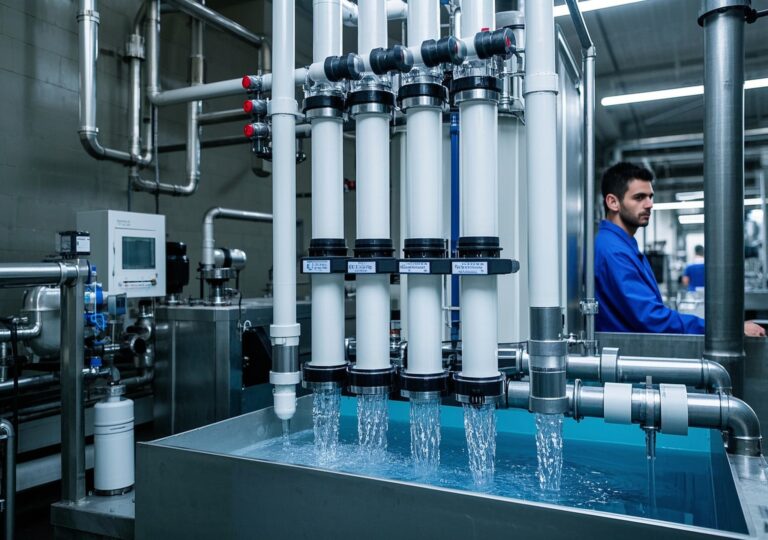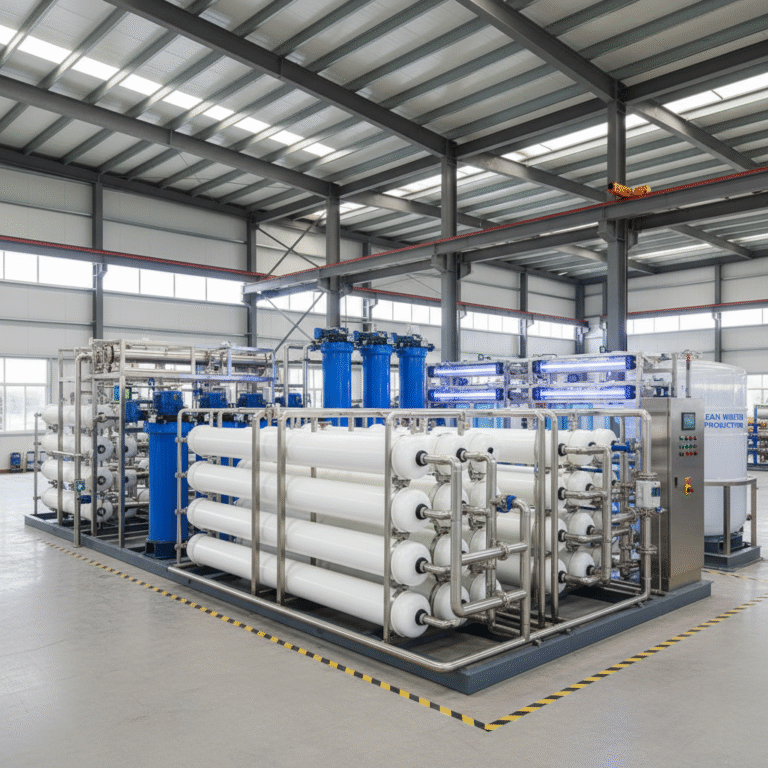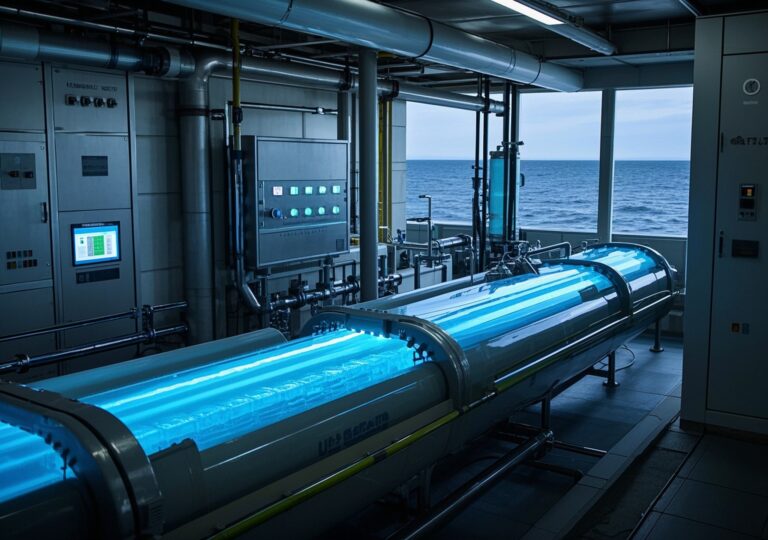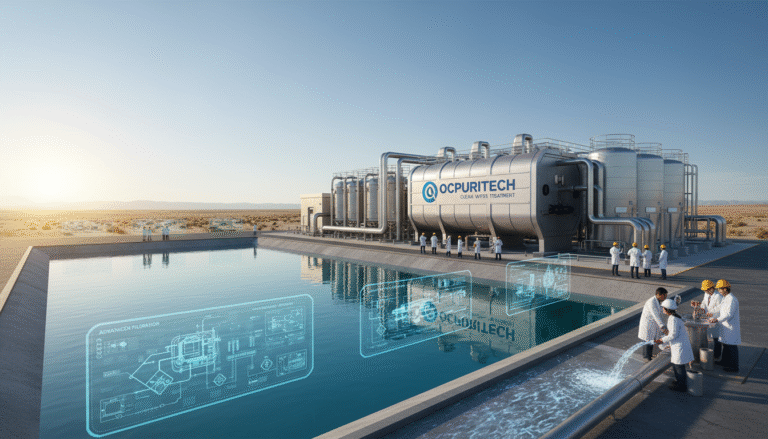Questioning Efficiency: Can Whole House Water Treatment Systems Serve Industrial Needs?
Questioning Efficiency: Can Whole House Water Treatment Systems Serve Industrial Needs?
Water treatment technologies traditionally designed for residential use, such as the whole house water treatment system, are increasingly scrutinized for their applicability in industrial and commercial contexts. As water quality standards intensify and operational demands grow, understanding the capabilities and limitations of these systems becomes critical. This article breaks down key water treatment modules, explores equipment scalability, and examines their role across varied industrial applications.
1. Core Components of Industrial-Grade Water Treatment Systems
While residential whole house water treatment systems primarily integrate filtration and softening technologies to address common household contaminants, industrial and commercial solutions incorporate more robust and scalable technologies. Below are the essential modules and their technical parameters:
1.1 Reverse Osmosis (RO) Membrane Systems
- Technology: High-pressure RO membranes capable of removing dissolved solids, heavy metals, and organic compounds.
- Capacity: Equipment categorized into small (1,000–5,000 gallons/day), medium (10,000–50,000 gallons/day), and large-scale systems (100,000+ gallons/day).
- Applications: Critical in semiconductor manufacturing, pharmaceutical ingredient preparation, and food and beverage processing.
- Advantages: High removal rates (>95% of total dissolved solids), reduced chemical usage compared to traditional methods, and integration capability with pre-treatment filters.
1.2 Filtration and Water Softening Systems
- Technology: Multi-media filters combined with ion exchange softeners to reduce turbidity, suspended solids, and hardness ions like calcium and magnesium.
- Equipment Tiers: Single-vessel units for light commercial use, modular multi-vessel systems for medium capacity, and containerized large-scale units.
- Applications: Boiler feed water conditioning, cooling tower makeup water, and industrial cleaning processes.
- Benefits: Protects downstream equipment from scaling and fouling, extends RO membrane lifespan, and improves overall system efficiency.
1.3 Containerized Water Treatment Systems
- Design: Fully integrated treatment plants assembled within shipping containers, enabling easy transport and rapid deployment.
- Capacity: From 50,000 up to 1 million gallons per day, customizable with multiple treatment stages according to client needs.
- Use Cases: Remote industrial sites, construction camps, disaster relief operations, and maritime applications.
- Key Features: Compact footprint, turnkey operation, remote monitoring capability.
1.4 Cleaning and Sterilization Systems (UV and Beyond)
- Technology: Ultraviolet (UV) disinfection units combined with advanced oxidation processes to eliminate bacteria, viruses, and protozoa.
- Suitability: Suitable for potable water production, pharmaceutical water systems, and spaces with strict hygiene regulations.
- Performance Highlights: Instant microbial inactivation, no chemical residues, low maintenance.
2. Technical Background and Industry Manufacturer Expertise
Top manufacturers specializing in scalable water treatment systems emphasize years of research and development focused on membrane technology, system automation, and real-time water quality monitoring. Their quality assurance includes certifications demonstrating compliance with ISO standards and validation of performance under industrial workloads. Combining comprehensive laboratory testing with field trials, these manufacturers are positioned to meet the exacting demands of sectors ranging from petrochemical plants to high-tech electronics fabrication.
For example, multi-tier product lines reflect an understanding that industrial water needs vary widely – from low-volume critical process water to high-volume utility water – driving manufacturers to innovate modular solutions that enhance availability and reduce lifecycle costs.
3. Versatile Applications of Industrial Water Treatment Systems
The breadth of industrial applications demands versatile treatment systems. Here are some prominent usage scenarios:
- Seawater Desalination: Large-scale reverse osmosis arrays convert seawater into industrial-grade freshwater, supplying power plants, coastal industries, and municipal utilities in arid regions.
- Portable Drinking Water Units: Containerized and compact treatment plants provide safe drinking water in disaster zones, military deployments, and remote construction sites, ensuring regulatory compliance and reliability.
- Spacecraft Water Systems: Advanced purification technologies adapted to microgravity environments support potable water cycles for astronauts, highlighting extreme engineering application of these technologies.
4. Integrating Residential Concepts in Industrial Contexts: A Critical Perspective
Although the term “whole house water treatment system” refers mostly to residential Point Of Entry (POE) units designed to serve single-family dwellings, certain technological principles can translate effectively to smaller commercial or light industrial sites. For instance, advanced membrane filtration and smart control systems originating from residential markets have progressively been upscaled to address higher volume, more complex feed water conditions encountered in commercial settings.
However, wholesale application of residential systems for intensive industrial demands without customization often leads to suboptimal performance and premature failure. Engineering assessment must consider feed water quality, flow rate, chemical load, and regulatory compliance to select or adapt systems accordingly.
5. Experience Insights From Industry Projects
Drawing from recent projects, I observed that one mid-size manufacturing plant successfully integrated a modular whole house water treatment system variant combined with a dedicated RO stage and UV sterilization, achieving a 98% reduction in total dissolved solids (TDS) and eliminating microbiological contamination. The system handled an average flow of 25,000 gallons per day with minimal downtime across 18 months.
In another case, a food processing company deployed a containerized filtration and softening plant, improving water reuse rates from 40% to over 75%, cutting utility water costs by 35% annually. Their selection prioritized scalability and rapid deployment, enabling expansion aligned with production growth.
From my observations, critical success factors include proactive maintenance regimes, integration with real-time water quality sensors, and flexible design accommodating variable feed water characteristics.
Conclusion
While the whole house water treatment system concept originates in residential applications, its evolved technologies have found meaningful niches within industrial and commercial water management frameworks. Multi-tier equipment options from RO membranes to containerized modules offer scalable, reliable solutions across diverse sectors. Decision-makers should rigorously evaluate system design compatibility against feed water profiles and operational demands, leveraging proven manufacturer expertise and real-world performance data.
Ultimately, adopting a hybrid approach—melding residential water purification innovations with industrial-grade robustness—can yield optimized water treatment strategies essential for modern industrial operations.
References:
ResearchAndMarkets.com, Domestic Water Purification Technology Advancements Research Report 2025: Review of Leading Technologies Such as Membrane Filtration and UV-based Systems, May 27, 2025.




